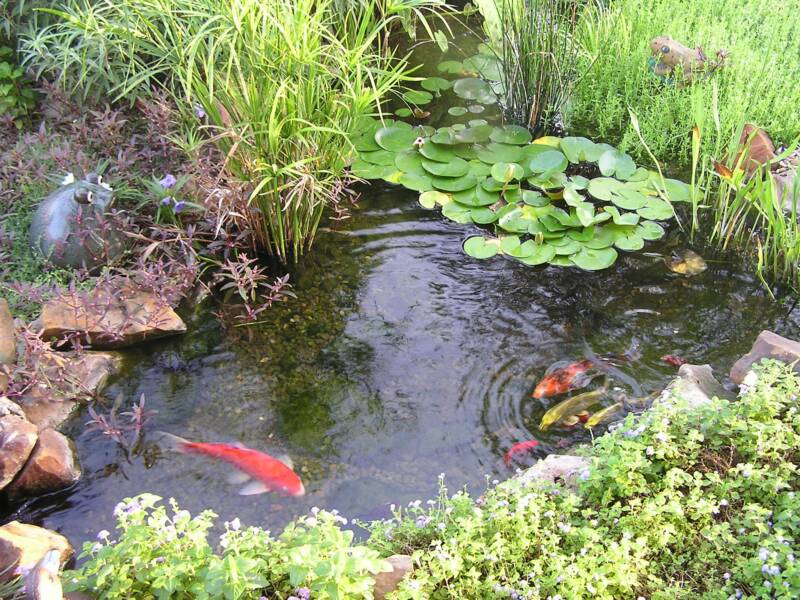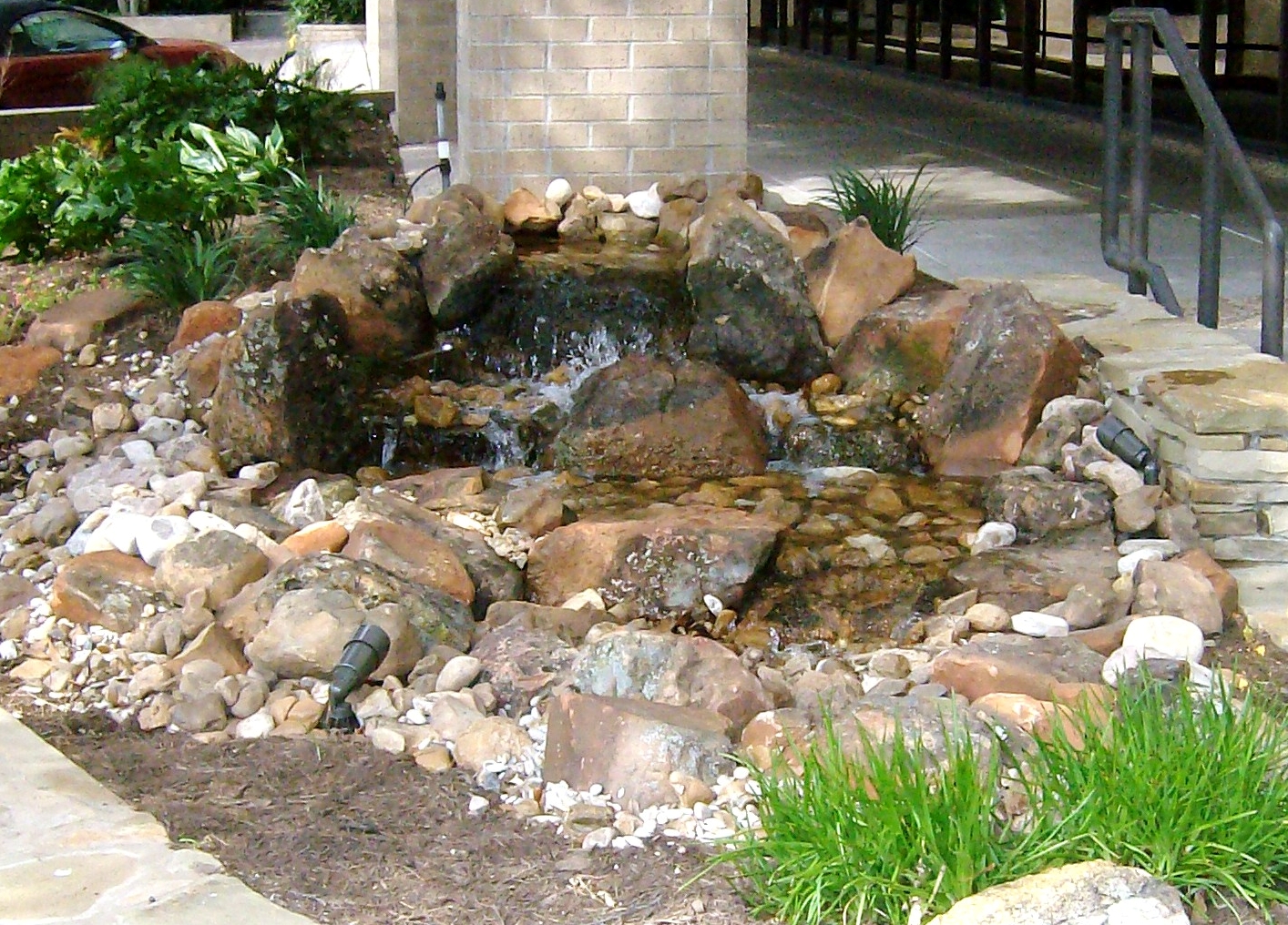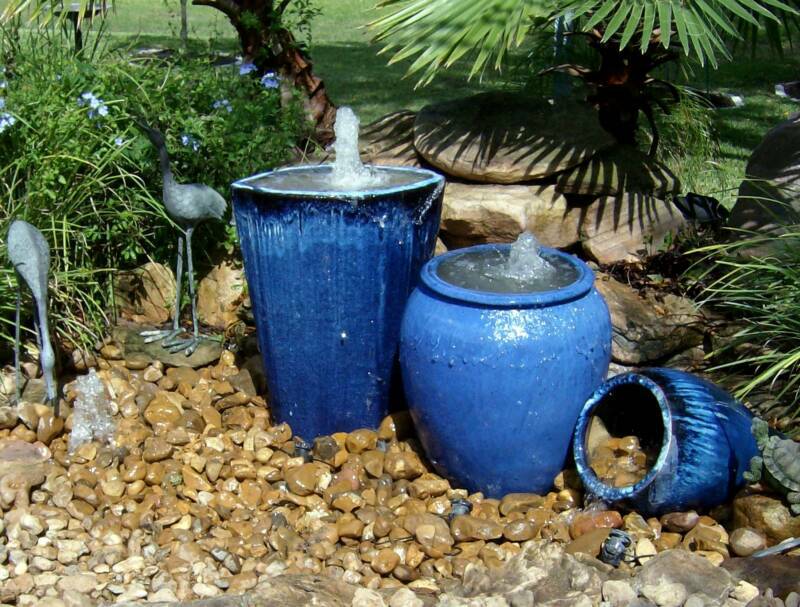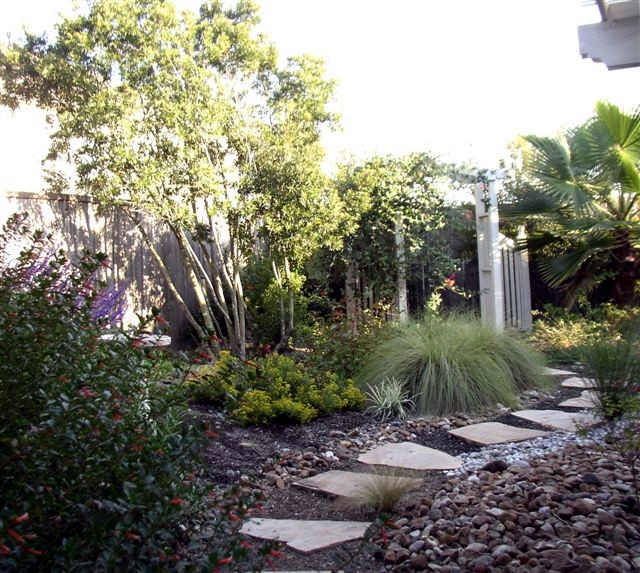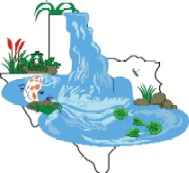


Rainwater Harvesting
Organic Ecosystem Ponds
Pondless Waterfalls
Urn and Fountain Features
Water-Wise Landscapes
Meet Your Water Feature Professionals


Texas Ponds and
Water Features
Pond Myths
by Matt Boring
The Natural Water Gardener
There are many myths floating around about ponds and water gardening. Some are based on the fact that newer organic pond systems operate differently from traditional systems and if you are a traditionalist, you probably don’t understand how the organic systems function and vice versa. When you mix aspects from different filtration systems that were never meant to work together, you usually come up with a system that doesn’t work or at least work properly. Since you’re not sure about what was good and what was bad about the system you put together, you may just assume that the whole thing was bad or that the hobby of water gardening is just too much trouble and expense to figure out. However, don’t fret. Most of the things that you’re facing for the first time have been addressed hundreds or thousands of times by those of us in the business of providing organically-functioning water gardens to our customers. I rely on an organic system that works time after time, so I don’t have to re-invent the wheel each time I set out to build a water garden for my clients. And neither should you. On organic pond will function in Texas just like one in Minnesota, or Canada for that matter. We just get a longer season to enjoy ours, since it won’t freeze over for three months at a time. In fact, Southern pond owners are the luckiest of all ponderers because we can enjoy our water gardens all year long. Many of our water plants never go dormant, and since we don’t have to shut down our systems for months at a time, spring clean-outs are a lot easier. In fact, depending on the pond, some of us get by with just cleaning the Biofalls and doing a partial water change each spring. My Mom’s pond is going on 4 years now without being cleaned!
Myth: You can’t have rocks and gravel in your pond.
The truth is that rocks and gravel are one of the ingredients in the recipe for a balanced organic pond system and should be used in every pond. Rocks and gravel help protect the liner from UV rays, help hold the liner in place, help hold the structure of the pond against hydraulic pressure, and provide lots and lots of surface area for beneficial bacteria to colonize, insuring a cleaner and healthier pond ecosystem. This was the topic of my article last month, so I’m not going to go into too much detail here. Just let me share a quick anecdote with you. In June my pond was on the Houston Pond Tour. Later in the afternoon, a man came through who said he was looking to build his own pond. “Everything I’ve read says that you shouldn’t put gravel in your pond” he told me, “ but every pond on this tour that has gravel in it is clear, clean, and beautiful.”
Remember, gravel is not a magic bullet to cure all pond problems. If your water feature is built with another filtration system, simply adding gravel won’t help and may make a mess when you’re trying to clean the pond. In any case, you should only use enough gravel to cover the liner and never should it be more than 2" deep!
Myth: Ponds are a lot of work.
The truth is that ponds used to be a lot of work. Chemically regulated ponds required almost daily checking of pH levels, dissolved solid levels, ammonia levels, and on and on. Pumps sitting on the bottom of the pond clogged and had to be cleaned frequently so they didn’t burn up. Large sand filters require frequent back-flushing to prevent clogging. Ponds without skimmers required their owners to skim out leaves and debris with a hand-held pool skimmer or put a net over the pond during the fall. Potted aquatic plants had to be removed from their pots each spring, divided, repotted in soil, fertilized, and reintroduced to the pond. Sounds like a lot of work to me.
A well designed and properly built organic water feature will house an actual ecosystem that becomes nearly self-maintaining. The fish eat organic materials, including any string algae in their environment. Their waste is broken down by the beneficial bacteria to become fertilizer for the aquatic plants. Most of the plants are out of their pots, so the roots soak in excess nutrients from the water like a sponge, starving out the suspended algae that turns your pond green as well as most, if not all, of the string algae. The pump is housed in a skimmer, keeping it from clogging while at the same time, skimming windblown debris from water’s surface. There is no testing of the pond water, no back-flushing of the filters, and any plants that get too large can simply be pulled out of the gravel by hand.
Myth: You need a UV sterilizer to keep your water clear.
The truth is that UV sterilizers will clear green water. But if your system is designed correctly, your water won’t be green to start with. So why go to the extra expense and trouble? In an organic pond, these sterilizers do far more harm than good. UV sterilizers indiscriminately kill off anything in the water that passes by. This includes suspended algae, to be sure, but also includes some of the beneficial bacteria as well as microscopic and planktonic life– the first level of the pond’s ecosystem. With the first level out of kilter, it will be hard, if not impossible, to create a functioning ecosystem in your water garden. The UV sterilizer will do nothing for string algae in the pond since it never passes the UV light. And the bulbs are only good for six months or so and then you have to change them. The best course of action is to determine why the water’s green in the first place and fix those conditions. Be pro-active rather than reactive. Green water is merely a symptom of an unbalanced pond. UV sterilizers simply mask the symptom, they don’t solve the problem.
Myth: You can’t have fish in the same pond with plants.
In a natural water garden, plants and fish live together just fine, just like in nature. In fact you need both as part of the ecosystem that will ultimately make your pond nearly self-maintaining. The recipe for a balanced pond ecosystem is 1) fish, 2) plants, 3) rocks and gravel, 4) mechanical and biological filtration, and 5) pumps and plumbing. If any of the ingredients are missing, the recipe won’t turn out right. This myth was born from pond owners who kept their plants in pots and had no gravel on the pond’s bottom. Koi, being natural bottom feeders, have a natural urge to root around on the bottom of the pond. But since there was no gravel on the bottom, only fish waste and other debris, they would just swim around bored until you put a nice potted plant into the water. Then, their natural urges would take over and they would root around in the plant’s pot, ultimately either knocking it over or uprooting the plant within. To be perfectly honest, the fish sometimes develop a taste for an aquatic plant or two and may devour them. But there is such a wide variety of plants available in the water gardeners pallette that you shouldn’t have trouble finding a replacement that they don’t eat.
Myth: Backyard ponds breed mosquitoes.
Mosquitoes breed in stagnant water. But by including a skimmer in your pond’s design, you will never have stagnant water. The surface of the water is constantly pulling to the skimmer. Since the pond skimmer was developed and has gained acceptance in the water gardening world, many people have been saved the mosquito pit nightmare. However, the little pond kits available at hardware stores don’t come with skimmers. And preformed plastic liner ponds will frequently become stagnant since their pumps, located on the bottom of the pond, tend to clog easily. The pond can quickly become a maintenance headache the owner is not willing to cater to. Once the water stops flowing, mosquitos will soon show up and throw a pool party in your yard. And you will be the main course in their banquet!
Happy Pondering!

